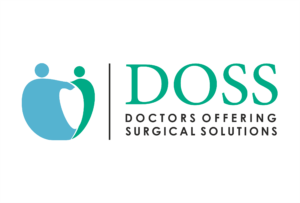Gallstone vs. Bile Sludge – What’s the Difference?
Let’s Answer the Main Question First:
Gallstones are solid stone-like formations made of cholesterol or pigment found in the gallbladder, while bile sludge (also called gallbladder sludge) is a thick, muddy mixture of bile, cholesterol crystals, and calcium salts.
Bile sludge is softer and may clear on its own, while gallstones are harder and usually require treatment. Both can cause similar symptoms but are different in structure, risk, and treatment approach.
In this blog, we’ll break down everything you need to know—in the simplest terms—so you understand the differences clearly.
Whether you’re worried about your own health or researching for a loved one, this is your complete, no-confusion guide.

First, What is the Gallbladder and What Does it Do?
The gallbladder is a small, pear-shaped organ located just below your liver. Its job is to store bile, a yellowish fluid made by the liver that helps your body digest fat.
When you eat a fatty meal, your gallbladder squeezes out bile into the small intestine to help break it down. Think of it as a “bile storage tank.”
What is Bile Sludge?
Bile sludge is a semi-solid mixture that forms when bile becomes concentrated or stagnant. Instead of being a clear fluid, it becomes thick and sticky.
Main components of bile sludge:
- Cholesterol crystals
- Calcium salts
- Mucus
Sludge often forms when the gallbladder isn’t emptying properly—like during pregnancy, rapid weight loss, or long fasting.
Symptoms of Bile Sludge:
- Mild pain or pressure in the upper right abdomen
- Indigestion or bloating
- Nausea after fatty meals
- Sometimes no symptoms at all
Can it go away? Yes. In some cases, bile sludge clears on its own with lifestyle changes.
What are Gallstones?
Gallstones are solid, stone-like lumps that form from hardened bile substances. They can be tiny like grains or as big as a golf ball.
Types of Gallstones:
- Cholesterol stones (most common)
- Pigment stones (from excess bilirubin)
Symptoms of Gallstones:
- Sudden, intense pain in the upper right abdomen
- Pain after eating (especially fatty meals)
- Nausea and vomiting
- Bloating or gas
- Fever or yellowing of skin (if infection is present)
Gallstones are more likely to cause biliary colic or block the bile duct, leading to complications.
Main Differences Between Gallstones and Bile Sludge
|
Feature |
Bile Sludge |
Gallstones |
|
Texture |
Thick, muddy |
Solid, stone-like |
|
Formation |
From stagnant bile |
From hardened bile components |
|
Symptoms |
Often mild or silent |
Can be intense and painful |
|
Reversibility |
May dissolve on its own |
Usually permanent unless removed |
|
Treatment |
Diet changes, observation |
May require surgery (cholecystectomy) |
|
Risk |
Can become stones |
Can block ducts, cause infections |
Which One is More Dangerous?
Gallstones are usually more dangerous because they can block bile ducts, leading to severe pain, infections (cholecystitis), or pancreatitis.
Bile sludge is often a precursor to gallstones. If untreated, it can eventually harden into stones.
So while bile sludge isn’t usually an emergency, it’s still a sign that something’s off in your gallbladder.
What Causes Bile Sludge or Gallstones to Form?
Here are some shared and unique causes:
Shared Causes:
- High cholesterol in bile
- Poor gallbladder movement
- Diets high in fat or processed foods
Bile Sludge-Specific Triggers:
- Pregnancy
- Fasting or starvation
- Rapid weight loss
- Long-term use of IV feeding
Gallstone-Specific Triggers:
- Obesity
- Diabetes
- Hormonal birth control pills
- Genetics (family history)
Diagnosis: How Do You Know What You Have?
At DOSS India, Pune, gallbladder issues are diagnosed using:
✅ Ultrasound: Best way to detect stones and sludge.
✅ Blood Tests: To check for infection or liver issues.
✅ CT Scan or MRI: In more complex cases.
If you feel discomfort or recurring pain after meals—especially fatty ones—it’s a good idea to get checked.
What Does Treatment Look Like?
For Bile Sludge:
- Low-fat diet
- Hydration
- Regular meals (avoid fasting)
- Medication in some cases (like Ursodiol)
- Follow-ups to monitor progression
Sludge may resolve naturally if caught early.
For Gallstones:
- If painless: Watchful waiting
- If painful or problematic: Surgery
Laparoscopic gallbladder removal (cholecystectomy) is the most common and safest option. Done as a day-care procedure at centers like DOSS India, Pune.
Can Bile Sludge Turn into Gallstones?
Yes. That’s why early diagnosis matters. Sludge that sits in the gallbladder too long can harden into stones. If you’re at this stage, you still have time to prevent complications by making small lifestyle changes.
Do You Always Need Surgery?
Not always.
- If you have bile sludge or silent gallstones, surgery may not be needed immediately.
- If you have frequent pain, infections, or duct blockage, surgery is usually recommended.
Doctors at DOSS India suggest individual treatment based on ultrasound results and symptom severity.
What Should I Eat If I Have Bile Sludge or Gallstones?
Best Foods:
- Fruits (banana, papaya, apple)
- Vegetables (steamed or lightly sautéed)
- Whole grains (brown rice, oats)
- Lean proteins (fish, chicken, tofu)
- Plenty of water
Foods to Avoid:
- Fried foods
- Spicy or greasy dishes
- Red meat
- Excess oil or ghee
- Sugary foods and sweets
Eat small, frequent meals and avoid skipping meals. A stable routine keeps bile flowing smoothly.
Real Patient Story from Pune
Sunil, a 42-year-old engineer from Pune, came to DOSS India with frequent bloating and mild pain after dinner. An ultrasound showed he had bile sludge, not gallstones yet. With the help of a dietitian and regular follow-ups, his symptoms disappeared in 3 months. No surgery needed.
On the other hand, Anjali, a 51-year-old homemaker, ignored her bloating for over a year. She later developed gallstones and needed surgery. Fortunately, her laparoscopic surgery went smoothly at DOSS India and she recovered within a week.
FAQs – You Might Be Wondering:
Q1. Can bile sludge cause pain?
Yes, it can cause mild discomfort, especially after meals.
Q2. Can I prevent gallstones if I have sludge?
Yes. A healthy diet and regular gallbladder movement can help.
Q3. Will gallstones go away on their own?
No. Once formed, they usually stay unless removed.
Q4. Can gallstones or sludge affect liver function?
Yes, if they block the bile duct. This is a serious condition needing quick treatment.
Q5. Is surgery risky?
Laparoscopic gallbladder surgery is very safe, with short recovery time. At DOSS India, Pune, it’s performed regularly with excellent results.
Final Thoughts: Listen to Your Body
Whether it’s bile sludge or gallstones—don’t ignore recurring abdominal pain. Both are signs that your gallbladder isn’t happy.
The good news? With early diagnosis and the right care, you can avoid complications and live a completely normal life.
For expert evaluation and treatment, reach out to DOSS India, Pune—a trusted center for advanced gallbladder care.
Think you might have bile sludge or gallstones?
Book an ultrasound and consultation with specialists at DOSS India, Pune, and get peace of mind today.


 +919011100010
+919011100010 








